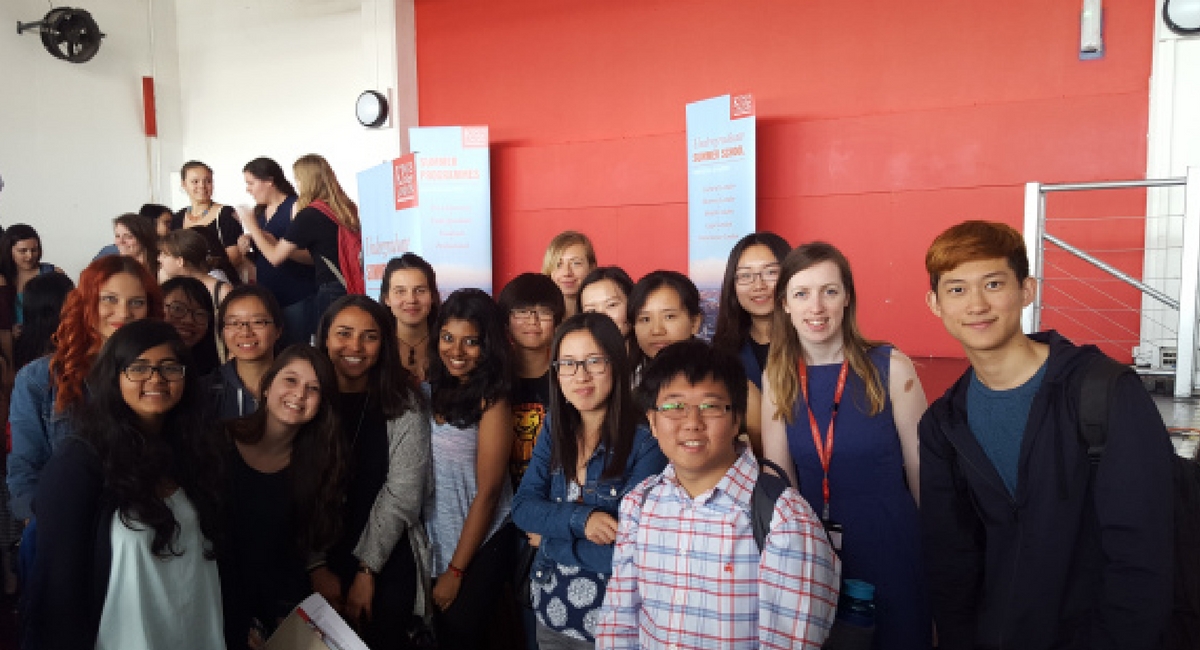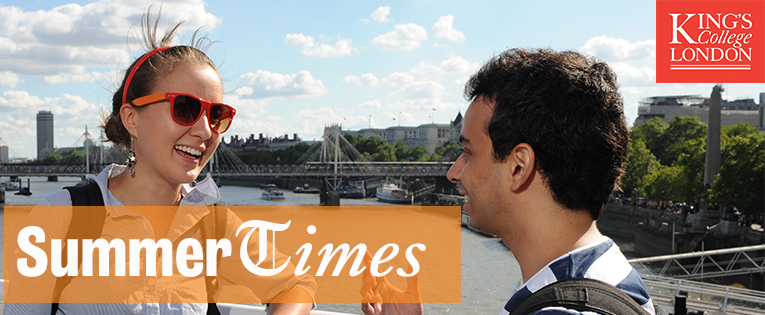
Helen Saunders is a PHD candidate at King’s College London, writing on modernist literature and fashion, who is also a freelance media analyst. Helen co-taught the Literature in the City module with George Legg. The original blog can be found here.
I’ve just finished co-teaching a Summer School at King’s College London. My co-tutor and I split the course, so he took on some more theoretical stuff, along with Yeats and Woolf, while I taught Joyce for a week – a whole week! – as well as Elizabeth Bowen. I also took the final session of the course, in which we talked about Rebecca Solnit’s views on maps and I showed my students the evolution of the Tube map over time.
It was a spectacularly busy three weeks, with afternoon sessions each day running 2-6. It is really hard to teach for four hours a day, and to think of ways to keep students interested, so this was great teacher training. And while I wasn’t a teacher in the sense that I wasn’t in loco parentis (all my students were over 18) my admiration for my schoolteacher friends grew inestimably over the course.
Nonetheless I like to think I managed things well. I knew all their names within a day or two (!) and was touched at the end of the course when several said they’d enjoyed Joyce as one of the favourite writers. We’d done extracts from throughout Joyce’s career – ‘The Dead’, ‘A Little Cloud’, ‘Two Gallants’; ‘Wandering Rocks’ and ‘Lestrygonians’; and finished with some extracts from the Wake, including ALP’s beautiful closing lines (which we compared with ‘Penelope’, too). No Portrait, you’ll have spotted, because it didn’t quite accord with the theme of the course as clearly as the other texts did (I may change this next year, as part on my ongoing project to learn to love Portrait). With this exception, I think the immersion into an author like this, for five solid days, is a great experience. Teaching Joyce to an international classroom was great fun: when tackling the Wake, we established we had 19 languages between us all, and if that’s not a good thing for tackling it, I don’t know what is.
We also went on some terrific trips. I took my students to the British Library and the Museum of London, but my favourite external trip was to the now-closed tube station at Down Street, as part of our Elizabeth Bowen/Blitz lesson. We had a guide from TfL who showed us the amazing station, explaining how it had been converted during the war into the offices of the Railway Executive Committee. Many of the original features and fittings are still there, including signage and even baths and toilets! Though I took some pictures, we were told not to share these on social media. It’s worth booking your own trip, but our guide warned us these cost about £70.
I say ‘external’ trip above because we also spent some time in the KCL archives. Our wonderful college archivists had prepared an assortment of bits, including Virginia Woolf’s Class List (you can just see her, Miss V. Stephen, in the German category) and John Keats’ enrolment register (he’s right at the bottom of the list)! I work a little bit on Woolf and I’d love to come back to these archives post-submission (hopefully in the next six months or so?) to work on these documents more. Her father, Leslie Stephen, also went to King’s for a bit (post-Eton, pre-Cambridge) and I wonder if there’s an article to be written, ‘The Stephens at King’s’ or such:

Back in the classroom, I had a really marvellous view from my teaching room in the KCL History department:

I might be teaching the course again next year. If so then I’ll make some changes to the syllabus such as adding more authors in, even if this means – yes – reducing the time spent on Joyce, and maybe getting the students to put together a mini Symposium one afternoon. Irrespective of future changes, it was a great three weeks to be involved in.
